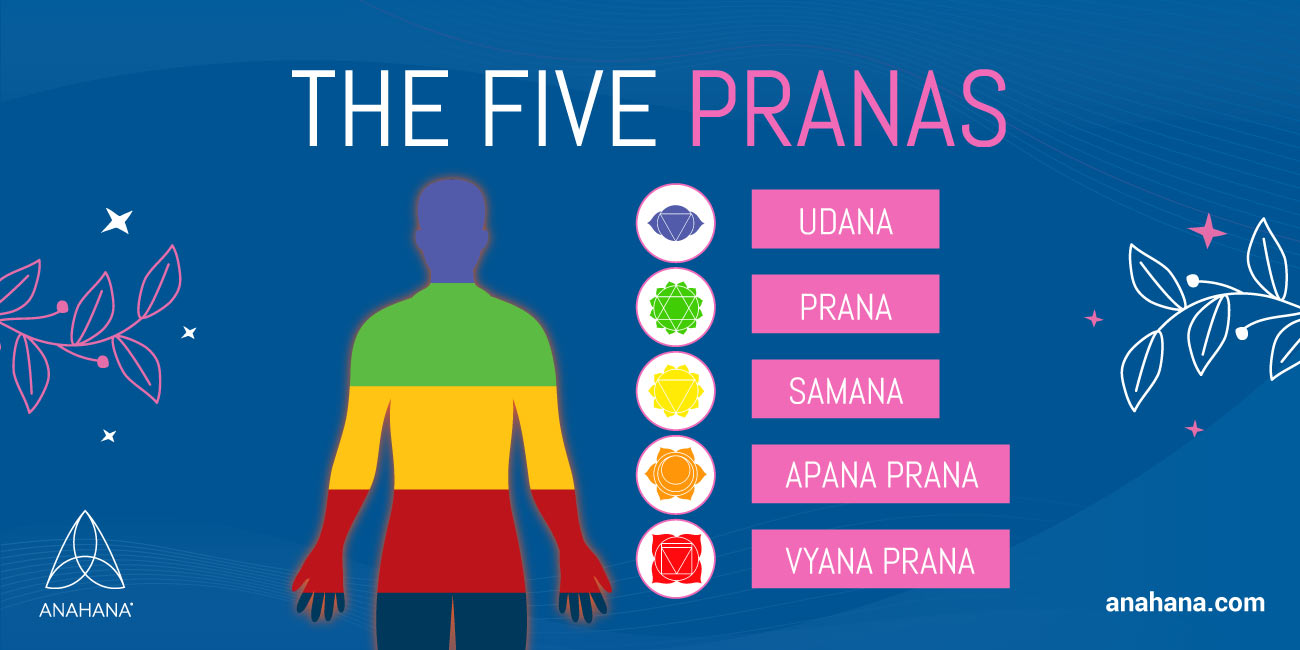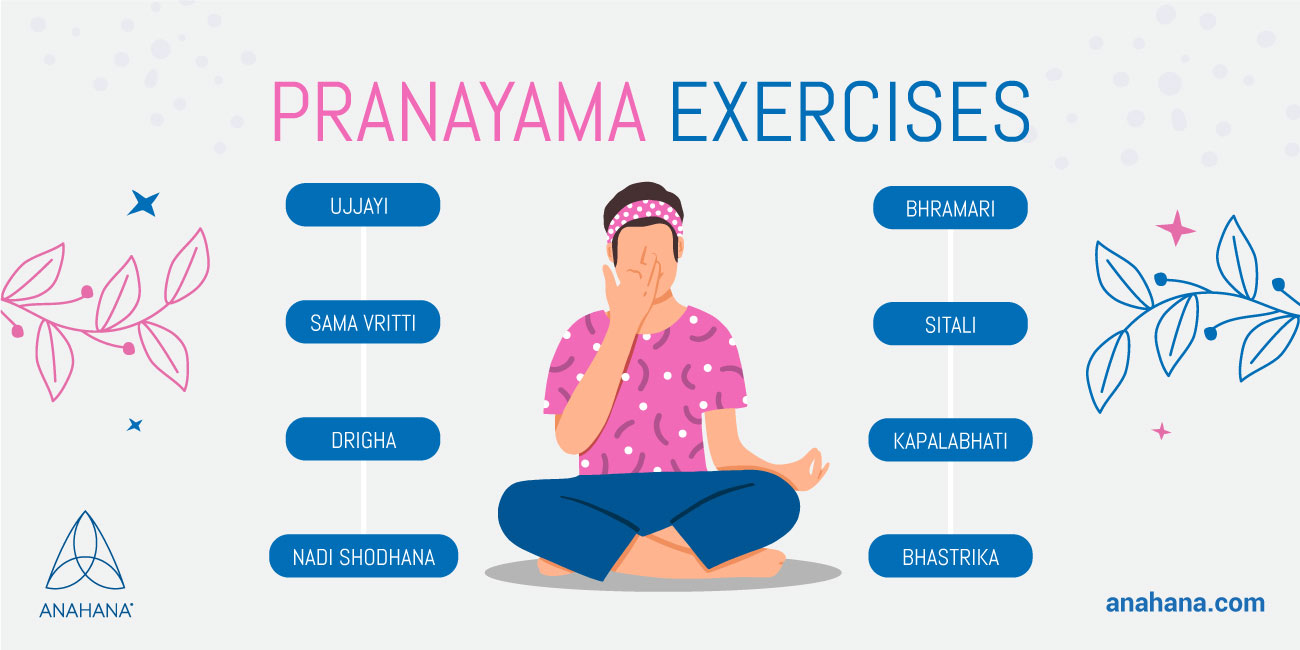
Table of Contents
Prana is an ancient concept that describes the vital energy flow that is a foundation for all living being and governs all movement in the body, including functions such as blood flow, breathing, and digestion. Yoga practices can increase Prana flow in the body and awareness of Prana.
What is Prana
Prana is an ancient concept described in Hindu literature, Indian medicine, martial arts, and yoga. Prana is also a vital part of traditional yoga practices and is discussed in the traditional texts of Ayurveda, Tantra Yoga, and Hatha Yoga. Prana is short and is the essence of all living things, and many people refer to it as the life force energy. Prana is the foundation of all living beings and the sum of all the forces in nature. Within the human body, Prana is the energy flow responsible for all movement of and within the body, including the body's essential functions.
Prana and the Physical Body
Prana in the physical body is a form of energy constantly flowing throughout the body. It is responsible for all movement, from the most basic functioning to the body's movement through space.
Prana controls body functions, including breath and oxygen distribution, digestion, secretion, and extraction in the body. Prana also affects mental processes, including intaking sensory information, emotional processing, and balance in mind. The flow of Prana determines the overall health of the physical body. Prana travels through the body through a network of channels called Nadis. Although there are many Nadis in the body, three principal Nadis flow through the body's spinal cord and energy centers called Chakras.
Prana flows into the body in many ways, including through the air, food consumed and surrounding natural energies. Certain practices will increase the flow of Prana into the body, including breath work, movement, and connections to nature.
The Five Pranas - Vayus
 Prana in the body can be divided into five functions called Vayus, each regulating a unique area of the body with specific functions.
Prana in the body can be divided into five functions called Vayus, each regulating a unique area of the body with specific functions.
Udana
Udana governs the tasks above the heart, including thinking, expressing, and speaking. It is also responsible for upwards movement within the body.
Prana
Prana regulates the heart area and is responsible primarily for the heart and breath. It is responsible for the upward movement and forward momentum of the body. Prana is increased with breath and air entering the body.
Samana
The Samana regulates the area around the navel. It governs digestion and absorption of nutrients in the body and balance in the digestive process.
Apana Prana
Apana Prana is in the pelvic region of the body. It controls outward and downward energy. Apana controls excretion from the body, including urination and defecation.
Vyana Prana
Vyana Prana regulates the entire body’s circulation but is based in the heart. It includes the circulation of blood, lymph, and body movement.
Prana in Yoga
The concept of Prana is an essential part of yoga philosophy. Prana work is incorporated into yoga practice through Pranayama. Pranayama consists of breathing exercises where a person controls their breath using specific techniques. Pranayama is considered one of the eight limbs of yoga. Pranayama can be practiced as a stand-alone exercise or incorporated into other yoga practices.
Other Yoga practices increase Prana flow and Prana awareness in the body. Hatha Yoga increases the control and circulation of Prana as well as activating the Nadi channels in the body. Asana, which is the sitting meditation pose, also increases the circulation of Prana and activates the Nadi channels.
Pranayama not only increases the flow of Prana but also increases Prana awareness. Incorporating Prana awareness into a yoga practice is beneficial as it creates feedback that can guide one through their yoga practice. It helps one gain awareness of their body and the self in the present. Prana also increases physical and mental engagement in the yoga practice. Lastly, Prana awareness makes it easier the meditate and increases mindfulness.
The health benefits of regularly practicing Pranayama include reducing stress and anxiety, improving mental clarity, boosting lung capacity, and energizing the body. Pranayama is beneficial for improving sleep quality and mindfulness. Studies also show that Pranayama can decrease blood pressure and improve cognitive functioning.
Examples of Pranayama Exercises
 Ujjayi
Ujjayi
Ujjayi pranayama is one of the most common Pranayama practices in yoga. It is also known as victorious breath. To practice Ujjayi, one would inhale and exhale through the nose while creating some resistance to the airflow through the throat—this resistance for the passage of air makes a soothing sound that sounds almost like a light snore. This technique creates slow, deep, and controlled breathing, calms the body, and increases oxygen intake. It is also commonly called Ocean Breath.
Sama Vritti
Sama Vritti Pranayama is also known as box breathing or equal breathing. Sama Vritti helps to slow and deepen the breaths into the body. To practice Sama Vritti Pranayama, one would inhale for four seconds, hold for four seconds, exhale for four seconds, and then hold for four seconds. Sama Vritti promotes calmness in the body and is a technique to reduce anxiety.
Drigha
Dirgha pranayama is also generally known as a three-part breath. Drighra is grounding and helps improve awareness of one’s senses. It is practiced by initially taking breaths to fill the belly with air, then breaths to start filling the belly and rib cage with air, and then the last breaths filling the belly, ribcage, and upper chest with air. Dirghra pranayama increases relaxation and can reduce the body’s stress response, including heart rate and blood pressure.
Frequently Asked Questions
What is Prana also known as?
Prana is a Sanskrit word with many meanings and interpretations in the English language, including “to breathe,” “movement,” and “energy.” Prana is also called the life force energy, vital energy, vital principle, and spirit energy.
What decreases Prana?
Bad posture and specific movements can decrease Prana. For example, a hunched-over posture reduces prana flow to the head. Breathing in polluted air is thought to decrease Prana. Focusing on negative thoughts, including fears, worry, and anger, can also deplete Prana.
What are other ways to increase Prana?
Prana can increase in the body through interactions with nature and the elements, such as walking barefoot and swimming in natural water. Prana is also increased by breathing fresh air and practicing pranayama (breathing exercises).
Resources
What Is Prana & How Can We Feel It? - Insight Timer Blog
Understanding the Flow of Prana (Life-Force Energy) • Yoga Basics
What is Prana? - Toronto Sivananda Yoga Vedanta Centre
Prana Demystified: Definition Of Prana & The 5 Vital Energies
Increasing Prana Through the 5 Elements | Sivananda Yoga Farm.
Pranayama for Beginners: Learn About the Practice + How to Start
Disclaimer
The contents of this article are provided for informational purposes only and are not intended to substitute for professional medical advice, diagnosis, or treatment. It is always recommended to consult with a qualified healthcare provider before making any health-related changes or if you have any questions or concerns about your health. Anahana is not liable for any errors, omissions, or consequences that may occur from using the information provided.

By: Anahana
The Anahana team of researchers, writers, topic experts, and computer scientists come together worldwide to create educational and practical wellbeing articles, courses, and technology. Experienced professionals in mental and physical health, meditation, yoga, pilates, and many other fields collaborate to make complex topics easy to understand.
